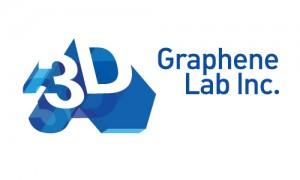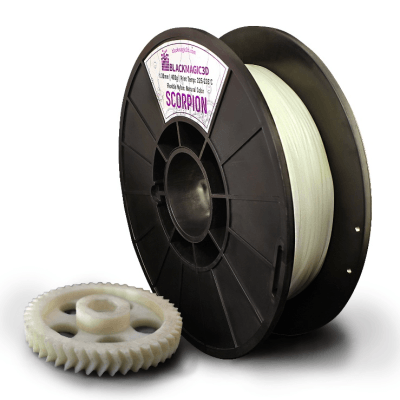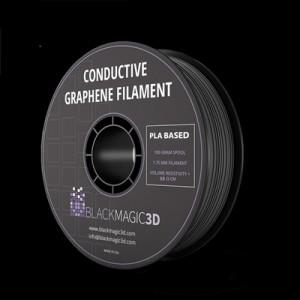 In a recent letter to shareholders, New York-based Graphene 3D Lab is highlighting its accomplishments in 2016, as well as a summary of the company’s primary objectives for 2017. One of the company’s main goals for the year ahead is to take advantage of its “cutting-edge IP portfolio and expand the offerings in industrial-grade graphene materials, coatings, and composites.” Graphene 3D Lab will also work on expanding its commercial product offerings, and will continue to build strategic, mutually-beneficial relationships with research institutions and industry partners in fields like automotive, robotics, aerospace, and energy storage.
In a recent letter to shareholders, New York-based Graphene 3D Lab is highlighting its accomplishments in 2016, as well as a summary of the company’s primary objectives for 2017. One of the company’s main goals for the year ahead is to take advantage of its “cutting-edge IP portfolio and expand the offerings in industrial-grade graphene materials, coatings, and composites.” Graphene 3D Lab will also work on expanding its commercial product offerings, and will continue to build strategic, mutually-beneficial relationships with research institutions and industry partners in fields like automotive, robotics, aerospace, and energy storage.
In 2016, Graphene 3D Lab decided to “expand and diversify its presence in the advanced materials space.” It worked hard to establish a new division, form important partnerships with other businesses, and develop new 3D printing materials. In March, the company established its Industrial Materials Division. Since the division began, the company has developed several new 3D printing materials, including ultra-light graphene foam that can absorb up to 8,000% of its weight in oil, and the G6-IMPACT graphene composite material, which is ideal for components that need to withstand impact and vibration, thanks to its incredible rigidity and absorption. When 3D printing is used for manufacturing, the need for vibration damping is real. 3D printing is a very effective method of manufacturing mechanical parts as one single piece which, while reducing labor costs, causes the structural components to “suffer from the destructive power of undesirable vibration,” as Graphene 3D Lab puts it. The G6-IMPACT material, for which the company filed a provisional patent application, fixes this issue.
 The company also introduced Scorpion Flexible Nylon, which was designed to eliminate the poor adhesion problems that plague most nylon filament. Scorpion features strong adhesive properties and is resilient enough to keep its shape while undergoing stress. Graphene 3D Lab said a handle made using this new filament was easily able to lift 20 lbs. in testing without being damaged. It’s also bendable, and items 3D printed with Scorpion can be bent all the way back – and spring back to their original shapes once released – without cracking.
The company also introduced Scorpion Flexible Nylon, which was designed to eliminate the poor adhesion problems that plague most nylon filament. Scorpion features strong adhesive properties and is resilient enough to keep its shape while undergoing stress. Graphene 3D Lab said a handle made using this new filament was easily able to lift 20 lbs. in testing without being damaged. It’s also bendable, and items 3D printed with Scorpion can be bent all the way back – and spring back to their original shapes once released – without cracking.
 In response to multiple customer requests about flexible 3D printing materials, Graphene 3D Lab also expanded its conductive composites line, and combined its rubber-like TPU (thermoplastic polyurethane) material with electrically conductive properties to develop Conductive Flexible TPU. This filament is ideal for applications dealing with flexible electronics, such as electromagnetic and radio frequency shielding, flexible sensors, and flexible conductive traces that can be used in wearable electronics. The company does recommend that the material be used for low-current applications of no more than 12 volts. All of the new materials can be purchased through BlackMagic3D, the company’s online material store.
In response to multiple customer requests about flexible 3D printing materials, Graphene 3D Lab also expanded its conductive composites line, and combined its rubber-like TPU (thermoplastic polyurethane) material with electrically conductive properties to develop Conductive Flexible TPU. This filament is ideal for applications dealing with flexible electronics, such as electromagnetic and radio frequency shielding, flexible sensors, and flexible conductive traces that can be used in wearable electronics. The company does recommend that the material be used for low-current applications of no more than 12 volts. All of the new materials can be purchased through BlackMagic3D, the company’s online material store.
In addition to completing the integration of operations for Graphene Laboratories, the company also teamed up with Toner Plastics Inc. in a joint product collaboration, to “expand its manufacturing capabilities for larger volumes and size range of 3D printing filaments.” Graphene 3D Lab also continued work with its top-secret Fortune 500 partner and completed the first step of a collaborative project in developing a new graphene-based product. According to the research, development, and royalty agreement, the revenue from the project can only be realized after commercialization and FDA approval.
Back in 2015, the company announced its prototype functional 3D printer, the Romulus III, capable of printing working organic LED devices. The company wanted to demonstrate the benefits of functional 3D printing, coupled with the capabilities of its 3D printing materials. This year, the company has decided “not to pursue further internal development of the functional 3D printer hardware and stay focused within the company’s core expertise in advanced materials.”
There were also some shake-ups in terms of company management, as both Robert Scott and Jeff Dare joined the management team in the roles of CFO and Corporate Secretary, respectively. Both of these appointments came about as CFO Robert Randall and COO and Corporate Secretary Ian Klassen took their leave of these roles.
 In terms of objectives for the new year, Graphene 3D Lab plans to focus on the advancement of its graphene materials toward commercialization, as the management team believes that the company “has the potential for rapid growth in the near future.” Some of the other, more specific objectives include to:
In terms of objectives for the new year, Graphene 3D Lab plans to focus on the advancement of its graphene materials toward commercialization, as the management team believes that the company “has the potential for rapid growth in the near future.” Some of the other, more specific objectives include to:
- Expand production capacity and lower price of graphene materials
- Offer new innovative materials by incorporating graphene into polymers and resins with focus applications in defense, aerospace, transportation, energy and construction
- Expand product line in 3D printing space
- Grow the business development team and establish collaboration with a number of large industrial organizations
Commercialization can be tough, but if the company’s track record is any indication, it will do just fine. It is smart to focus on advancing the materials, since it seems that more and more industries these days are looking for unique 3D printing materials. Graphene has some really amazing properties, and it is projected to be one of the most used materials for the production of computers and next generation consumer electronics in the future. Discuss in the Graphene 3D Lab forum at 3DPB.com.
Subscribe to Our Email Newsletter
Stay up-to-date on all the latest news from the 3D printing industry and receive information and offers from third party vendors.
You May Also Like
Precision at the Microscale: UK Researchers Advance Medical Devices with BMF’s 3D Printing Tech
University of Nottingham researchers are using Boston Micro Fabrication‘s (BMF) 3D printing technology to develop medical devices that improve compatibility with human tissue. Funded by a UK grant, this project...
3D Printing Webinar and Event Roundup: April 21, 2024
It’s another busy week of webinars and events, starting with Hannover Messe in Germany and continuing with Metalcasting Congress, Chinaplas, TechBlick’s Innovation Festival, and more. Stratasys continues its advanced training...
3D Printing Webinar and Event Roundup: March 17, 2024
It’s another busy week of webinars and events, including SALMED 2024 and AM Forum in Berlin. Stratasys continues its in-person training and is offering two webinars, ASTM is holding a...
3D Printed Micro Antenna is 15% Smaller and 6X Lighter
Horizon Microtechnologies has achieved success in creating a high-frequency D-Band horn antenna through micro 3D printing. However, this achievement did not rely solely on 3D printing; it involved a combination...






























